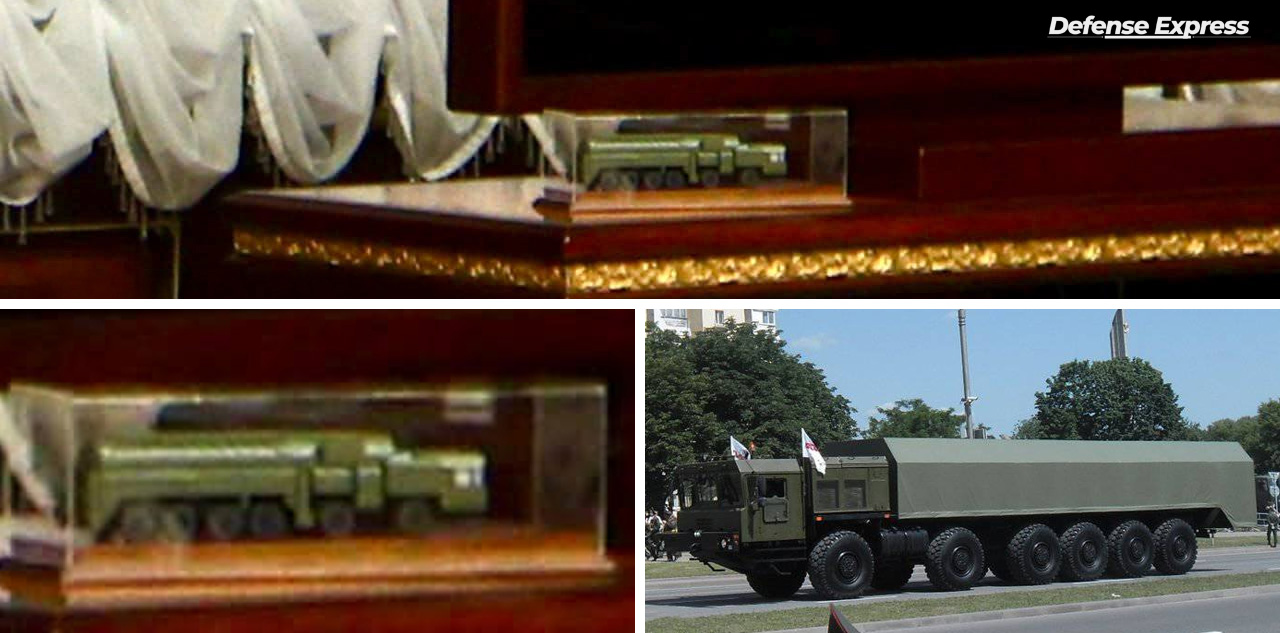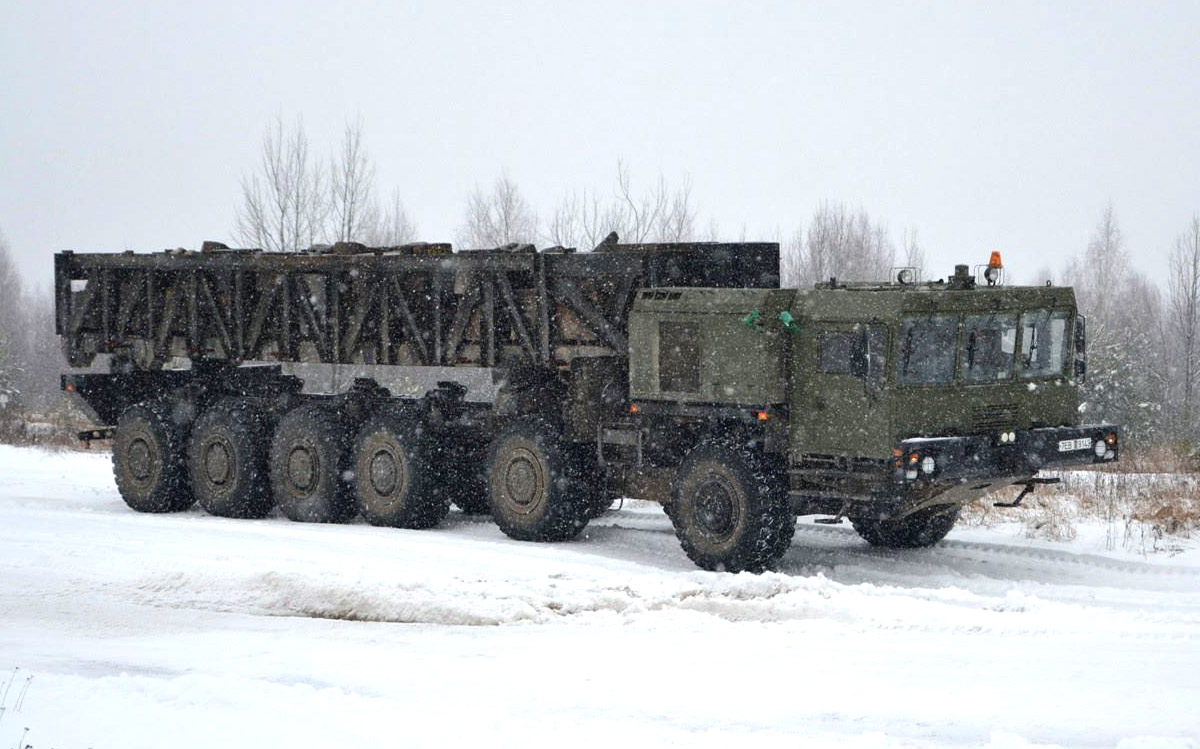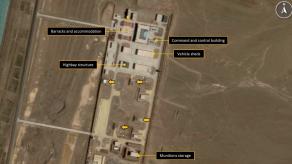A conspicuous display in President Alexander Lukashenko's office appears to have inadvertently revealed the appearance, and, with it, important technical clues, of a new medium-range missile launcher known in reporting as the Oreshnik. Photographs taken during his meeting with the Prime Minister of Kyrgyzstan show a model of the launcher deliberately arranged for the cameras, with people placed to the edge of the frame in a composition that maximized visibility. What may have been intended as a gesture of prestige thus became a revealing intelligence moment: analysts can now examine the launcher's chassis and external layout in detail.
Open-source visual analysis points to the launcher riding on the MZKT-79291 chassis produced by the Minsk Wheel Tractor Plant. That is a significant identification. The MZKT-79291 family is already known as the foundation for a range of russian ground-launched systems, and Minsk's heavy-duty wheeled tractors have long supplied mobility for strategic and tactical rocket systems. If the chassis attribution is correct, the vehicle's provenance and logistics chain become much clearer, and potentially more vulnerable to scrutiny and supply constraints.
Read more: Warhead Weight of the 1,000 km Ukraine's Long Neptune (RK360L) Revealed, and It's a Welcome Surprise

Any public-image-derived technical conclusion must be approached cautiously, because deliberate deception is always possible. State actors may stage images precisely to mislead adversaries or to shape narratives. Still, the chassis identification is not trivial: it ties the system to a known platform with measurable capabilities, and that allows for reasoned estimates of weight, payload, and mobility even from a few clear pictures.

Comparative data help ground those estimates. When russian designers sought a domestic alternative to the Belarusian MZKT solution, they developed the KamAZ-78509 12×12 chassis and declared a payload capacity of about 50 tonnes, explicitly noting it was some 10 tonnes less than the Belarusian equivalent.
From that exchange, it is reasonable to infer the MZKT-79291 chassis has an approximate payload capability near 60 tonnes. Historical parallels are also instructive: the Soviet-era MAZ-547 12×12 chassis for the RSD-10 Pioneer missile had a declared carrying capacity up to about 55 tonnes, and the Pioneer missile's transport-launch container (TPC) weighed roughly 42.7 tonnes on its own.

Using those proportional comparisons, a cautious working estimate for the full mass of the Oreshnik missile inside its TPC is roughly 45-48 tonnes; without the container, the missile itself might be on the order of 40-43 tonnes. These are not precise measurements but derived approximations based on chassis payload figures and known container masses from analogous systems, useful for modeling mobility, roadability and logistic demands, and for assessing which bridges and transport routes could support deployments.
If the Oreshnik missile is indeed the RS-26 Rubezh system or a direct derivative, as some reporting suggests, the identification has operational and geopolitical implications. A mobile medium-range system on heavy Belarusian chassis would be a strategic concern for regional defense planners: mobility complicates detection, while reliance on a single foreign supplier for chassis constrains production scale and could become an axis for export controls or targeted disruption.

Ultimately, the episode is a reminder that public posturing can leak actionable technical information. Intelligence consumers and analysts should combine this imagery with other sources, signals, procurement records, satellite imagery and human reporting, to corroborate the chassis attribution and the missile type. Meanwhile, the staged photographs themselves merit scrutiny as both a source of technical insight and a potential vehicle for controlled disinformation.
Read more: russia Receives Fresh Batch of the Terminator Tank Support Combat Vehicles for War














